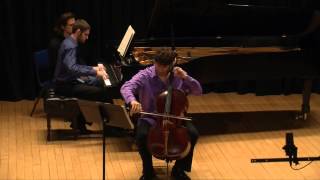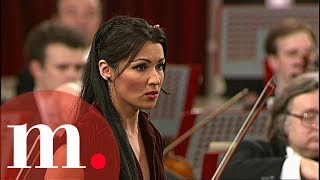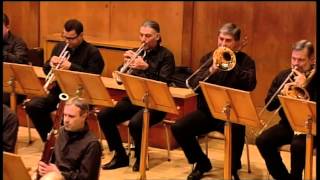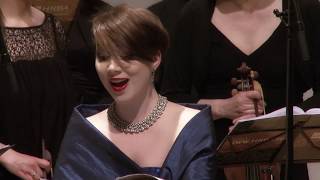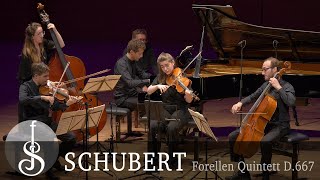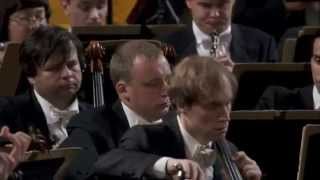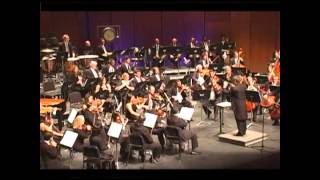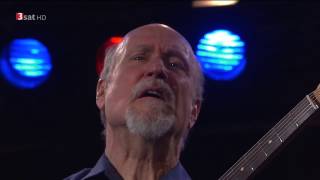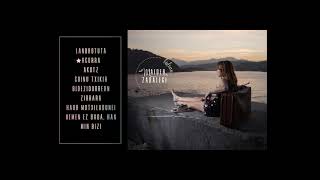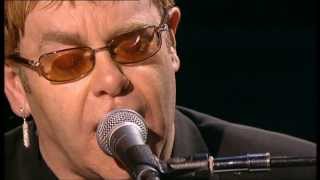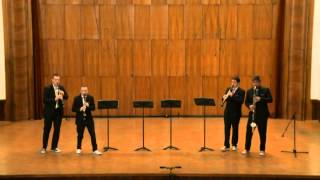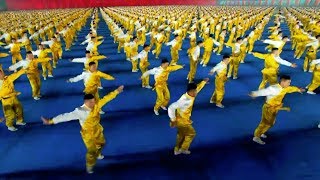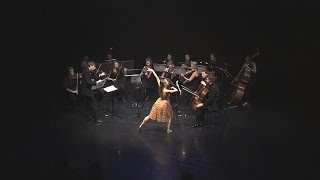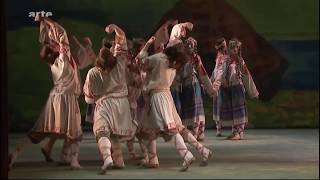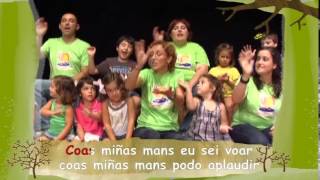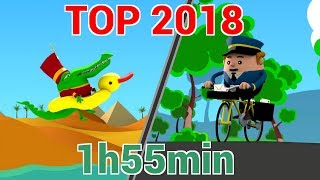On March 20 at 9:24 p.m. Spring begins
Recommended music videos for initiation to classical music
Antonio Vivaldi (1678-1741) was an Italian priest, violinist, and composer known as the red priest (“il prete rosso”). He was born in Venice and as a child learned to play the violin from his father; at the age of 15 he entered the Seminary and once ordained a priest, he could barely attend to his religious obligations due to his health problems; so he was appointed violin teacher in an orphanage where he taught theory and instrument classes. At the age of 40, he was appointed Chapel Master in Mantua where he wrote his famous Four Seasons . From there he moved to Milan , then to Rome ; later, again to Venice and finally, to Vienna where he would die. Throughout his life he composed almost 800 works, of which half were concerts, 40 operas, 60 religious works and numerous sonatas.
The Four Seasons are a set of four concertos (Fast-Slow-Fast) for violin, which at its premiere included an explanatory booklet similar to what we understand as program music . Today we offer the Spring Concert with Julia Fisher as a soloist.
spring . This is what the brochure that can serve as a listening guide said: I (0'23'') ALLEGRO “Spring has arrived and celebrating it, the birds greet it with joyful singing and the fountains with the breath of the zefirillos. With sweet murmur they run meanwhile: They come covering the air with black mantle, lightning, and thunder, chosen to announce it. Thus silencing these, the little birds; They return to their sweet charm again. II (3´25´´) LONG AND PIANISSIMO ALWAYS . "And so, on the flowery and pleasant meadow, to the dear murmuring of forests and plants, the goatherd sleeps with the faithful dog at his side." III ( 6´01´´) ALLEGRO PASTORALE “From the pastoral hurdy-gurdy to the festive sound, nymphs and shepherds dance on the beloved roof at the brilliant arrival of spring”.
César Franck (1822–1890) was a Belgian-born French composer and organist. His family settled in Paris at the beginning of 1835, and César entered his Conservatory at the age of fourteen. In 1872 he was appointed organ professor at the Conservatory . If his oratorio Les béatitudes had occupied him ten years (1868-78), in this new period each summer he concludes a new masterful composition. In 1882, The cursed hunter ; in 1884, the Prelude, choral and fugue and The Djinns ; in 1885, the Symphonic Variations ; in 1886, the Sonata for violin and piano ; in 1887, Prelude, aria and finale ; in 1888, Psyché and the Symphony in D minor ; in 1889, the String Quartet ; in 1890 the Three choirs for organ , which would constitute his authentic musical and spiritual testament.
The Sonata in A major for violin and piano by César Franck is one of his best-known compositions and is considered one of the best violin and piano sonatas ever written. The work is cyclical in nature : all movements share common thematic threads; the themes of one movement reappear in later movements, but generally transformed. Structured in four movements, today we offer the fourth movement, “ Allegretto poco mosso ”, in a version for cello and piano with Oded Hadar on cello, accompanied by Yevgeny Yontov on piano. In this movement the main melody is heard in canonical imitation between the instruments, and is repeated in rondo fashion to a triumphant and soaring conclusion.
Giacomo Puccini (1858-1924) was an Italian opera composer, considered among the greatest, of the late 19th and early 20th centuries. He was a visionary, creator of the music concepts that would govern cinema during the 20th century ; for him, the use of modal passages or polytonal resources and tonality or atonality were matters of effect that were defined by the dramatic needs of the work. For example, in Tosca , the way in which the text is replaced by musical passages anticipates the action that is about to take place. In addition to twelve operas, Puccini wrote other notable works, including a Mass of Glory, a Hymn to Rome , a symphonic caprice, two symphonic preludes, and three minuets for string quartet. He is considered the successor to Giuseppe Verdi .
Quando me'n vo , also known as " Musetta's Waltz ", is a soprano aria, a waltz from the second act of Puccini 's 1896 opera La bohème . Musetta sings it , in the presence of her bohemian friends , hoping to win back the attention of her occasional boyfriend Marcello .
Ana Netrebko (1971), Russian singer and one of the most brilliant sopranos in history, began as a janitor at the Mariinsky Theater until she was heard by the conductor Valery Gergiev who became her adviser, beginning to play roles of some relevance. in various operas. At the age of 24 he made his debut in the USA where the successes were chained one after another after his appearance at the San Francisco opera. Claudio Abbado also played a relevant role in his dedication to the bel canto repertoire, while his technique was perfected with the Italian soprano Renata Scotto .
Aram Khachaturian (1903-1978) was an Armenian composer under the Soviet regime; at the age of 16 he entered the Moscow Conservatory to study with Nikolai Myaskovsky , among other teachers, and at the age of 22 he began to write for piano and chamber music; Later on, he will delve into the production of orchestral music, music for theater, film and ballet, in which the Espartaco ballet and the Gayané ballet stand out, to which the well-known saber dance belongs, which we offer today. Despite holding important positions, his work was dismissed as "anti-people" in Stalin 's time. His music is clear, agile and vibrant, and in his works Armenian popular music is felt, to which he was always attracted; in Armenia he is considered as its main composer.
Saber Dance is a movement from the final act of the ballet Gayaneh, composed by Aram Khachaturian and completed in 1942. It evokes an Armenian sword dance, in which the dancers display their saber skills. Its central section incorporates a traditional song from Gyumri (Armenian city). Given its lively rhythm, La danza del saber has earned a place in the concert repertoire and has been adapted on several occasions in popular music. Its recognizable ostinato and popular melody have made it a popular concert piece.
Recommended classical music videos
Henry Purcell (1659-1695) is considered one of the greatest English composers in history. He wrote all kinds of choral and instrumental works, both sacred and profane, among which the opera Dido and Aeneas shines . After the death of his father and at the request of his uncle, he was admitted as a member of the choir of the Capilla del Rey where he would begin his first studies. At the age of 17 he was appointed assistant organist at Westminste Abbey; At the age of 23, he was appointed titular organist, from which point on, and for six years, he only wrote sacred works until, starting in 1689, he wrote different operas. In his work, the French and Italian influence can be appreciated within what would be a typical British Baroque style. He died at the age of 36 at the height of his career.
The ode (from the Latin oda, a loan in turn from the Greek οdé, originally "song" or "singing action", and very soon after also used to designate hymns and songs of joyous or funeral praise, war or magic) is a lyrical poem and a high-tone or sung poetic composition that deals with various topics, including a reflection of the poet. Depending on the subject matter, it can be of a religious, heroic, philosophical or loving nature. In general it applies to any poem intended to be sung. It is also used to praise qualities possessed by people or objects that the poet wants to highlight positively.
Ode for Queen Mary's birthday (Ode for Queen Mary's birthday). There were several royal odes that Purcell composed on the occasion of some important event for the nobility, the king or queen (some birthday or return), among which the one in this video stands out. The version that we present today is offered to us by two Croatian groups such as the Ensemble Antiphonus vocal ensemble and the Croatian Baroque Ensemble instrumental ensemble led by the concertmaster of this group, Catherine Mackintosh .
Franz Schubert (1797-1828) was an Austrian composer who at the age of 11 was admitted as a member of the choir of the Imperial Chapel in Vienna , where he was taught by Salieri . At that time, what brought money was the theater, the opera, a genre in which he never managed to excel; so he turned to lieder (songs), among which we must highlight his Ave Maria and the lieder ensemble La Bella Molinera . Despite dying at the age of 31, he left written more than 1,500 works including numerous piano and chamber music pieces, 8 symphonies, concertante works, incidental music, sacred music (among others, 7 Masses, 1 Oratorio and 1 Requiem). , several singspiel (small operettas), some opera and more than 600 small vocal works, mainly the aforementioned lieder.
Das Forellen Quintett (The Trout Quintet) is the name often used for the Piano Quintet in A major by Franz Schubert , listed as D. 667 . The work was composed in 1819, when Schubert was 22 years old, but it was not published until 1829, a year after his death. The piece takes its name from its IV Movement , which is a set of variations on a theme written by Schubert earlier in his lied Die Forelle (The Trout). Today it is performed by the pianist Emanuel Ax with the Guarneri Quartet .
Antonín Dvořák (1841-1904), born in Nelahozeves (then Bohemia and now the Czech Republic ), is considered one of the great masters of the second half of the 19th century and the main representative of Czech nationalism. In 1847 he entered the primary school of his town, where he received his first musical lessons. During the 1860s he played viola in the Orchestra of the Bohemian Provisional Theater , conducted from 1866 by Bedřich Smetana . In 1873 he was exalted with all kinds of important international awards for his collection of Slavonic Dances . Throughout his life he wrote abundant vocal, chamber, symphonic and operatic music. His New World Symphony is a well-known work and its themes have been widely used in popular music.
Slavic Dances are a set of 16 dances written for orchestra, although originally for piano four hands, and published in two groups. He wrote them at the request of his publisher, and was inspired by Brahms 's Hungarian Dances , albeit with notable differences; while Brahms uses Hungarian folk melodies, Dvorak uses only the rhythms of Slavic folk music.
Today they are offered to us by the St. Petersburg Philharmonic conducted by the Hungarian maestro Zoltán Kocsis.
Claude Debussy (1862-1918) was a French composer considered to be the first composer of Impressionism . In 1884, with the cantata L'enfant prodigue, he won France 's most prestigious musical award, the Prix de Rome . Back in Paris , he was impressed by Wagner 's opera Tristan and Isolde , “the best I have ever heard”. Later he would be influenced by the structures of Javanese music, by the harmonic freedom of Rimski-Korsakov and by Erik Satie , similar to his approaches. In 1894 he premiered his Prélude à l'après-midi d'un faune ; four years later is when he achieved his international fame with his only finished opera Pelléas et Mélisande ; he was then 37 years old. Today Debussy is considered one of the most important composers of the 20th century .
Printemps (Spring) is a symphonic suite for orchestra and piano four hands, composed by Claude Debussy in two versions: the first (defunct) in 1887 and the second in 1908. Debussy composed Primavera while residing in the Roman Villa Medici after win the Prix de Rome inspired by La Primavera , a painting by Sandro Botticelli . The score of the first version was lost during the fire at its bookbinder. Debussy again composed a new version without chorus for piano four hands. The orchestration is due to Henri Büsser . The work consists of two movements: I (0´5´´) TRÈS MODÉRÉ .-. II (9'45'') MODÉRÉ, today presented by the Minas Gerais Symphony Orchestra conducted by maestro Charles Roussin.
Recommended music videos for all tastes
John Scofield (Dayton, Ohio, December 26, 1951) is a prominent American jazz guitarist and composer. In his teens, Scofield played rhythm & blues, urban blues, soul, and rock and roll in local bands; but he was soon fascinated by jazz guitar and quickly assimilated the styles of Wes Montgomery, Tal Farlow, Barney Kessel and Jim Hall . He studied with Jim Hall and Mick Goodrick , two of the most important jazz guitarists of all time, and worked with important jazz musicians such as Charles Mingus , or George Duke ; for three years he joined the band of trumpeter Miles Davis . Over the years, Scofield 's playing matured further, leading to a series of critically acclaimed and original jazz albums.
Maider Zabalegi Galardi (Oiartzun, November 24) is a Gipuzkoan singer and songwriter. At the age of 14 he formed a trikitilaris duo with Alaitz Telletxea , called Alaitz eta Maider , which at the end of the 90s achieved great success. They published three albums until in 2004 they said goodbye to the stage. After a decade, in 2017 he started a new project and in March he released his first album, Zuei .
In 2019 he published his second album, Bidean, which we offer today: 1 (0´00´´) Lanbrotuta .-. 2 (2´46´´) Agurra .-. 3 Akotz (6´45´´) .-. 4 (10´45´´) Soinu txikia .-. 5 (14´35´´) Bidezidorrean .-. 6 (17´52´´) Zirrara .-. 7 (21´15´´) Haur motxiladunei .-. 8 (23´47´´) Hemen ez bada, have .-. 9 (27'29'') Min bizi.
Elton John (1947) is a British singer, pianist, composer and musician. With a career spanning more than 50 years, he has sold more than 300 million copies worldwide, being one of the most successful artists in history and the only to keep at least one song on the Billboard Hot 100 for 30 consecutive years, from 1970 to 2000. His song Candle in the Wind 1997 , rewritten on the occasion of the death of Diana of Wales sold more than 33 million copies being the second best-selling single in history. He has won five Grammy Awards, five Brit Awards, two Golden Globes, a Tony Award, a Disney Legends Award, two Oscars , and the Kennedy Award. In 1996, he was Knighted after being made a Commander of the Order of the British Empire and the appellation Sir was added to his name.
Mariza , stage name of Marisa dos Reis Nunes (1973) is a fado singer, one of the most popular in Portugal and one of the Portuguese artists with the greatest international projection. Of a Portuguese father and a Mozambican mother, Mariza was born in Mozambique and grew up in the Lisbon neighborhood of Mouraria , the birthplace of fado. He grew up listening to this music in different Lisbon venues; As he grew up, his musical interests broadened into gospel, r&b , and Brazilian music . It began to be recognized in 1999 following the death of the greatest fadista in history, Amália Rodrigues , in whose posthumous tributes Mariza participated. In 2018, he received the Luso-Spanish Art and Culture Award , for "his work in favor of promoting relations between the two countries."
Recommended peculiar videos
The clarinet is a musical instrument of the family of woodwind instruments with a single reed (the oboe and bassoon use double reeds). Within the orchestra, he is in the woodwind section, along with the flute, oboe, saxophone and bassoon. The timbre of the clarinet is rich in nuances and expressive possibilities. Along with the flute and the violin, it is the most agile instrument in the orchestra; it can emit any extreme nuance in any of its registers, making this instrument an extremely versatile voice. Great works and concertos have been written for the clarinet, most notably one of the most highly rated concertos in history, Wolfgang Amadeus Mozart 's Concerto in A Major for Clarinet and Orchestra .
Parts of the clarinet . Mouthpiece : it is the piece where the reed is placed and the instrumentalist places the mouth to make the embouchure. The reed is a thin strip of material (usually wood) that thanks to the wind that is produced when the instrumentalist blows, the reed vibrates producing a sound in the instrument. Barrel : it is the element that articulates the mouthpiece with the upper body of the instrument. Upper body : it is where the left hand is placed when playing and it has part of the instrument's mechanism. Lower body : it is where the right hand is placed when playing and it has part of the instrument's mechanism. Bell : Located in the lower part and fulfills an acoustic function that allows the projection of sound during the performance.
Clarinet quartet "Nevsky" offers us this small anthology of themes related to Spring from different nations and times, adorned with small sparks of crazy humor.
Chinese martial arts . Over the centuries, hundreds of fighting styles have been developed in China that have their own schools of martial arts with physical exercises inspired by the movements of certain animals or by ancient Chinese beliefs. Its origin dates back more than 4,000 years as a way of self-defense against attacks from other peoples, for which hand-to-hand combat was inevitable and military training was essential. Today, turned into an amazing artistic spectacle, we can watch the movements of thousands of young people with millimeter precision and synchronization, young people from the Henan Shaolin Tagou Martial Arts SCHOOL , the largest Kung Fu school in the world, located in the province of Henan , in the Songshan Shaolin temple area.
Aaron Copland (1900-1990) was an American composer of classical music and film of Russian-Jewish origin. His work is influenced by impressionism and especially by Igor Stravinsky . He stood out along with George Gershwin as one of the most important composers of the musical identity of the United States in the 20th century . In the fall of 1917 he began studies in harmony and counterpoint with Rubin Goldmark ; At his suggestion, she studied piano first with Victor Wittgenstein and from 1919 with the famed pedagogue Clarence Adler . In June 1921, he went to France to study with Nadia Boulanger ; In 1924 he returned to the USA and the following year he was the first composer to receive the Guggenheim Fellowship , which he renewed in 1926.
In 1945 Copland received the Pulitzer Prize for Music and the New York Music Critics Award for his ballet Appalachian Spring , which is performed today by dancer Nancy Osbaldeston accompanied by the Constella Orchestra .
Igor Stravinsky (1882-1971) was a Russian pianist, conductor, and composer; for many critics, the most important of the 20th century . In his long life he delved into different styles and musical genres from post-romanticism to serialism or jazz . He studied, among others, with Rimski Korsakov and worked for different genres and musical formations; but after meeting Serguei Diaghilev , founder of the Ballets Russes , he collaborated closely with him. Stravinsky also wrote for various types of ensembles and genres from operas and symphonies to small piano pieces and works for jazz groups, achieving great fame not only as a composer, but also as a pianist and conductor. Time magazine considered him one of the most influential personalities of the 20th century .
Le Sacre du printemps (The Rite of Spring) is a ballet by Stravinsky written for the 1913 Paris season of the Ballets Russes company; the original choreography was by Vaslav Nijinsky , with set design and costumes by Nicholas Roerich . Its premiere at the Champs-Élysées Theater caused a sensation and riots in the audience due to the avant-garde nature of the music and choreography. The concept that Roerich develops from Stravinsky 's idea is suggested by his subtitle, « Images of pagan Russia in two parts ». The work describes the story, which took place in ancient Russia , of the pagan kidnapping and sacrifice of a maiden at the beginning of spring, who had to dance until her death. Today it is offered to us by the Mariinsky Theater Ballet and Orchestra under the baton of maestro Valery Gergiev .
structure . The composition is structured in two parts as follows: First part, Adoration of the Earth : I (4'35'') INTRODUCTION (Slow. Più Mosso. Tempo I) .-. II (7´40´´) SPRING AUGURIES. DANCE OF THE ADOLESCENTS (Tempo giusto) .-. III (11´00 ´) GAME OF THE RAPTURE (Presto) .-. IV (12´12´´) SPRING ROUNDS (Tranquillo. Sostenuto e pesante. Vivo. Tranquillo) .-. V (16´05´´) GAME OF THE RIVAL TRIBES (Molto allegro) .-. VI (17´32´´) COURTSHIP OF THE WISE .-. VII (18´56´´ 33´´) WORSHIP OF THE EARTH (The Wise) (Slow) .-. VIII (18´55´´) DANCE OF THE EARTH (Prestissimo) .-.
Second part, The sacrifice: I (20'02'') INTRODUCTION (Slow) .-. II (24´19´´) MYSTERIOUS CIRCLES OF ADOLESCENTS (Andante con moto - Più Mosso - Tempo I) .-. III (27´34´´) GLORIFICATION OF THE ELECTED ONE (Alive) .-. IV (29´06´´) EVOCATION OF THE ANCESTORS .-. V (29'59'') RITUAL ACTION OF THE ANCESTORS (Slow); VI (33´31´´) SACRED DANCE (The Chosen One) (Allegro). Today it is offered to us by the Mariinsky Theater Ballet and Orchestra under the baton of the eminent maestro Valery Gergiev .
Recommended music videos for children
Various Wikipedia articles have been used to write these texts.
The texts of Videomusicalis are written in Basque, Spanish and English.






